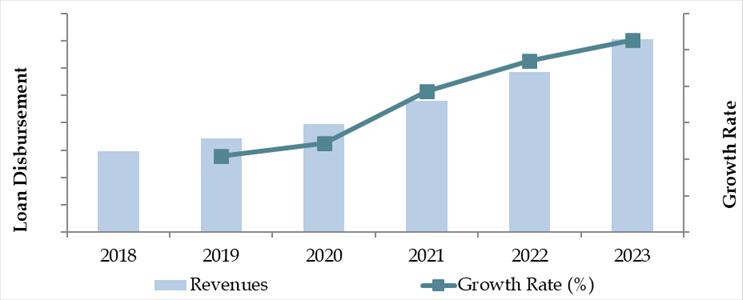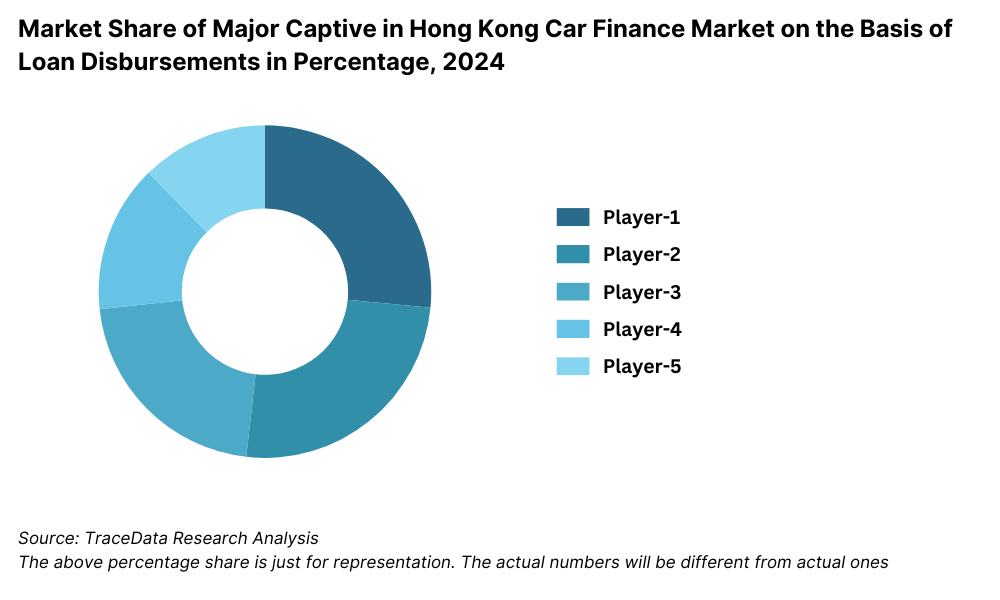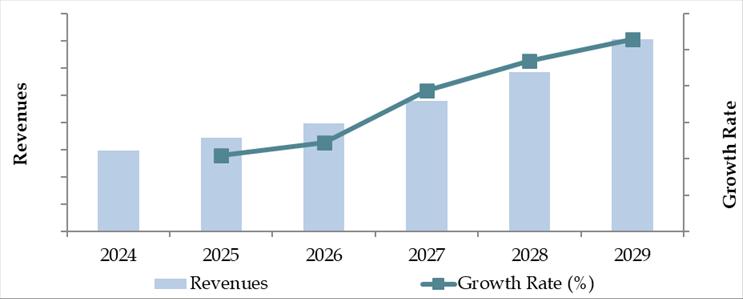Hong Kong Auto Finance Market Outlook to 2029
By Type of Vehicle Financed, By Lenders (Banks, Non-Banking Financial Companies, Captive Finance Companies), By Loan Tenure, By New vs. Used Cars, By Interest Rate Type, and By Digital vs. Traditional Financing Channels
- Product Code: TDR0142
- Region: Asia
- Published on: April 2025
- Total Pages: 110
Introducing the World's FirstPay-Per-Section Market Reports
Why pay for the full report when you need just a part?
Start Building Your Report
Scroll down to see available sections
Report Summary
The report titled “Hong Kong Auto Finance Market Outlook to 2029 - By Type of Vehicle Financed, By Lenders (Banks, Non-Banking Financial Companies, Captive Finance Companies), By Loan Tenure, By New vs. Used Cars, By Interest Rate Type, and By Digital vs. Traditional Financing Channels.” provides a comprehensive analysis of the auto finance market in Hong Kong. The report covers an overview and genesis of the industry, overall market size in terms of outstanding auto loans and financing penetration, market segmentation, trends and developments, regulatory landscape, customer profiling, issues and challenges, and competitive landscape, including the market share of key players, cross comparison, opportunities, and bottlenecks. The report concludes with future market projections based on financing volume, by market segment, lender type, tenure, and digital transformation case studies highlighting the major opportunities and challenges.
Hong Kong Auto Finance Market Overview and Size
The Hong Kong auto finance market reached a valuation of HKD 150 billion in 2023, driven by increasing vehicle ownership, rising demand for electric vehicles (EVs), and evolving consumer financing preferences. The market is characterized by key players such as HSBC, Standard Chartered, BOC Hong Kong, Dah Sing Bank, and Asia Miles Auto Finance. These financial institutions and NBFCs offer competitive auto loan schemes, innovative financing solutions, and attractive interest rates to support vehicle purchases.
In 2023, digital financing channels saw significant growth, with leading banks and fintech firms launching online platforms to facilitate hassle-free auto loan approvals. The introduction of flexible tenure options and low-interest rate financing has further contributed to market expansion. The key financing hotspots include Hong Kong Island, Kowloon, and New Territories, which account for the majority of auto loans due to high vehicle demand and economic activity.
Market Size for Hong Kong Auto Finance Industry Size on the Basis of Loan Disbursement in USD Billion, 2018-2024

What Factors are Leading to the Growth of the Hong Kong Auto Finance Market?
Rise in Vehicle Ownership: Hong Kong has seen a steady increase in vehicle ownership, with over 700,000 registered vehicles in 2023. This growth has driven demand for auto loans, especially among young professionals and business owners looking for flexible financing options.
Electric Vehicle Adoption: Government incentives, tax benefits, and subsidies for EV purchases have boosted demand for auto financing solutions. In 2023, EV financing accounted for 18% of total auto loans, a trend expected to rise with further regulatory support and an increasing number of electric vehicle models entering the market.
Digitization of Auto Loans: The adoption of digital lending platforms and AI-driven credit assessments has simplified loan approvals, reducing processing time by up to 40%. Around 45% of auto loans in 2023 were processed digitally, reflecting a shift towards tech-driven financial services. Digital applications have improved transparency, allowing customers to compare financing terms, calculate monthly payments, and get instant approvals.
Which Industry Challenges Have Impacted the Growth of the Hong Kong Auto Finance Market?
High Vehicle Prices: Hong Kong has one of the highest vehicle costs globally due to import taxes, limited parking availability, and land constraints. The rising cost of ownership has made some consumers hesitant about financing new vehicle purchases, leading to slower financing adoption for certain vehicle segments.
Stringent Loan Approval Criteria: Due to high property values and cost of living, banks have strict eligibility criteria for auto loan approvals. Reports indicate that 30% of applicants face rejections due to insufficient credit history or high debt-to-income ratios. This restricts a significant portion of the population from accessing auto financing solutions.
Regulatory Uncertainties: Frequent changes in emission policies and restrictions on internal combustion engine (ICE) vehicles have created uncertainty, impacting long-term financing decisions. Lenders and consumers are both wary of government-imposed restrictions, making it difficult to plan financing strategies for ICE vehicles.
What are the Regulations and Initiatives Governing the Market?
Zero-Emission Vehicle Policy: The Hong Kong government aims to phase out new ICE vehicle registrations by 2035, influencing lenders to prioritize EV financing schemes. This has led to the introduction of green financing solutions, with lenders offering lower interest rates and favorable terms for environmentally friendly vehicle purchases.
Loan-to-Value (LTV) Ratio Restrictions: Banks adhere to maximum LTV ratios of 80% for new cars and 70% for used cars, ensuring responsible lending practices. Some financial institutions also provide flexible down payment options to make auto financing more accessible.
Credit Scoring & AI Integration: The introduction of AI-based credit scoring models by financial institutions has enhanced loan approval efficiency and risk assessment. These advanced scoring models allow lenders to evaluate borrowers beyond traditional credit history, improving access to financing for first-time buyers.
Market Segmentation for Hong Kong Auto Finance Market
By Market Structure: The market is largely divided into bank-led financing, non-banking financial company (NBFC) financing, and captive finance companies. Banks dominate due to their established reputation, competitive interest rates, and regulatory stability. NBFCs have gained traction due to their flexible lending criteria and innovative loan offerings. Captive finance companies, such as those operated by leading car manufacturers, cater to brand-loyal customers and provide attractive in-house financing schemes.
By Type of Vehicle Financed: The market is segmented into new car financing and used car financing. New car financing holds the largest share, accounting for 75% of total auto loans in 2023, owing to strong promotional schemes by dealerships and banks. Used car financing, though smaller, is gradually growing as financial institutions introduce customized products to cater to this segment.
By Loan Tenure: The loan tenure typically ranges from 1 to 7 years, with 3-to-5-year loans being the most preferred due to balanced monthly payments and total interest cost. Short-term loans (1-2 years) are mostly utilized by high-income borrowers, while longer tenure loans (6-7 years) appeal to those looking for lower monthly installments.

.png)
Competitive Landscape in Hong Kong Auto Finance Market
The Hong Kong auto finance market is competitive, with both local and international players offering a range of financing solutions. The major players include banks, NBFCs, and captive finance companies. Below is a comparative analysis of key market participants:
| Name | Founding Year | Original Headquarters |
| HSBC Auto Finance | 1865 | London, UK |
| Standard Chartered Auto Loan | 1853 | London, UK |
| Bank of China (Hong Kong) Auto Loan | 1917 | Beijing, China |
| Hang Seng Bank Auto Finance | 1933 | Hong Kong, China |
| DBS Bank (Hong Kong) Car Loan | 1968 | Singapore |
| Citibank Hong Kong Auto Loan | 1812 | New York, USA |
| Dah Sing Bank Auto Loan | 1947 | Hong Kong, China |
| OCBC Wing Hang Auto Finance | 1937 | Hong Kong, China |
| Chong Hing Bank Auto Loan | 1948 | Hong Kong, China |
| Public Bank (Hong Kong) Auto Loan | 1965 | Kuala Lumpur, Malaysia |
| Toyota Financial Services Hong Kong | 1982 | Toyota City, Japan |
| Volkswagen Financial Services HK | 1949 | Braunschweig, Germany |
| BMW Financial Services HK | 1988 | Munich, Germany |
Recent Trends and Key Developments:
HSBC Auto Finance: HSBC launched an AI-powered loan approval system in 2023, reducing approval times by 35% and improving customer experience. It also introduced green auto loans with preferential interest rates for electric vehicles.
Standard Chartered Auto Loans: The company expanded its digital lending platform, recording a 40% increase in online auto loan applications in 2023. It partnered with leading car dealerships to offer exclusive financing discounts.
BOC Hong Kong Auto Finance: BOC Hong Kong introduced a zero-down payment scheme for electric vehicles, significantly boosting EV financing penetration in the market.
Dah Sing Bank Auto Loans: Dah Sing Bank expanded its buyback guarantee scheme, ensuring vehicle owners have a resale option, enhancing the security of their investment.
Asia Miles Auto Finance: Leveraging customer loyalty programs, Asia Miles Auto Finance introduced a unique points-based reward system for borrowers, driving customer engagement and brand loyalty.



What Lies Ahead for the Hong Kong Auto Finance Market?
The Hong Kong auto finance market is projected to experience steady growth through 2029, exhibiting a strong CAGR during the forecast period. Several factors will shape the future of this market:
Shift Towards Electric Vehicle Financing: As the Hong Kong government continues to push for green initiatives, there will be a notable rise in the financing of electric vehicles. More lenders are expected to introduce green auto loans with preferential rates, making EV ownership more accessible.
Integration of Advanced Technology: The use of AI-driven credit assessments, big data analytics, and blockchain-based smart contracts will improve loan approval speed, enhance transparency, and reduce fraud risks. These advancements will help both lenders and consumers make informed decisions.
Growth in Digital Auto Financing: With digitalization becoming the norm, the share of online auto loan applications is expected to surpass 60% by 2029. More banks and NBFCs will invest in AI-powered chatbots and automated loan processing to enhance customer experience.
Increase in Subscription-Based Vehicle Financing: Consumers, especially younger generations, are shifting towards flexible ownership models. Auto finance companies may increasingly offer vehicle subscription plans, allowing customers to lease vehicles with an option to buy at the end of the term.
Future Outlook and Projections for Hong Kong Car Finance Market Size on the Basis of Loan Disbursements in USD Billion, 2024-2029

Market Segmentation for Hong Kong Auto Finance Market
- By Market Structure:
- Banks
- Non-Banking Financial Companies (NBFCs)
- Digital Lenders
- Public Sector Banks
- Private Sector Banks
- Microfinance Institutions
- Captive Finance Companies
- By Vehicle Type:
- New Vehicles
- Used Vehicles
- Passenger Vehicles
- Commercial Vehicles
- Two-Wheelers
- Electric Vehicles (EVs)
- By Loan Tenure:
- <3 Years
- 3-5 Years
- 5-7 Years
- More than 7 Years
Players Mentioned in the Report (Banks):
- HSBC (Hong Kong)
- DBS Bank (Hong Kong)
- OCBC Bank (Hong Kong) Limited
- China Construction Bank (Asia)
- Dah Sing Bank
- Public Bank (Hong Kong)
Players Mentioned in the Report (NBFCs):
- ORIX Asia Limited
- Mitsubishi HC Capital (Hong Kong) Limited
- WeLab
- Sun Hung Kai & Co
Players Mentioned in the Report (Captive):
- Mercedes-Benz Financial Services Hong Kong Ltd.
- BMW Financial Services Hong Kong
Key Target Audience:
- Automotive Financing Companies
- Banks and Financial Institutions
- Online Auto Loan Marketplaces
- Regulatory Bodies (e.g., Hong Kong Monetary Authority)
- Research and Development Institutions
Time Period:
- Historical Period: 2018-2023
- Base Year: 2024
- Forecast Period: 2024-2029
Report Coverage
Choose individual sections to purchase. Mix and match as you like.
- -
- -
- $100
4.1. Value Chain Process-Role of Entities, Stakeholders, and challenges they face.
4.2. Relationship and Engagement Model between Banks-Dealers, NBFCs-Dealers and Captive-Dealers-Commission Sharing Model, Flat Fee Model and Revenue streams
$2505.1. New Car and Used Car Sales in Hong Kong by type of vehicle, 2018-2024
$150- $100
- $200
8.1. Credit Disbursed, 2018-2024
8.2. Outstanding Loan, 2018-2024
$3009.1. By Market Structure (Bank-Owned, Multi-Finance, and Captive Companies), 2023-2024
9.2. By Vehicle Type (Passenger, Commercial and EV), 2023-2024
9.3. By Region, 2023-2024
9.4. By Type of Vehicle (New and Used), 2023-2024
9.5. By Average Loan Tenure (0-2 years, 3-5 years, 6-8 years, above 8 years), 2023-2024
$40010.1. Customer Landscape and Cohort Analysis
10.2. Customer Journey and Decision-Making
10.3. Need, Desire, and Pain Point Analysis
10.4. Gap Analysis Framework
$50011.1. Trends and Developments for Hong Kong Car Finance Market
11.2. Growth Drivers for Hong Kong Car Finance Market
11.3. SWOT Analysis for Hong Kong Car Finance Market
11.4. Issues and Challenges for Hong Kong Car Finance Market
11.5. Government Regulations for Hong Kong Car Finance Market
$20012.1. Market Size and Future Potential for Online Car Financing Aggregators, 2018-2029
12.2. Business Model and Revenue Streams
12.3. Cross Comparison of Leading Digital Car Finance Companies Based on Company Overview, Revenue Streams, Loan Disbursements/Number of Leads Generated, Operating Cities, Number of Branches, and Other Variables
$50013.1. Finance Penetration Rate and Average Down Payment for New and Used Cars, 2018-2029
13.2. How Finance Penetration Rates are Changing Over the Years with Reasons
13.3. Type of Car Segment for which Finance Penetration is Higher
$250- $250
- $250
- $150
17.1. Market Share of Key Banks in Hong Kong Car Finance Market, 2024
17.2. Market Share of Key NBFCs in Hong Kong Car Finance Market, 2024
17.3. Market Share of Key Captive in Hong Kong Car Finance Market, 2024
17.4. Benchmark of Key Competitors in Hong Kong Car Finance Market, including Variables such as Company Overview, USP, Business Strategies, Strengths, Weaknesses, Business Model, Number of Branches, Product Features, Interest Rate, NPA, Loan Disbursed, Outstanding Loans, Tie-Ups and others
17.5. Strengths and Weaknesses
17.6. Operating Model Analysis Framework
17.7. Gartner Magic Quadrant
17.8. Bowmans Strategic Clock for Competitive Advantage
$75018.1. Credit Disbursed, 2025-2029
18.2. Outstanding Loan, 2025-2029
$30019.1. By Market Structure (Bank-Owned, Multi-Finance, and Captive Companies), 2025-2029
19.2. By Vehicle Type (Passenger, Commercial and EV), 2025-2029
19.3. By Region, 2025-2029
19.4. By Type of Vehicle (New and Used), 2025-2029
19.5. By Average Loan Tenure (0-2 years, 3-5 years, 6-8 years, above 8 years), 2025-2029
19.6. Recommendations
19.7. Opportunity Analysis
$400
Research Methodology
Step 1: Ecosystem Creation
Map the ecosystem and identify all the demand-side and supply-side entities for the Hong Kong Auto Finance Market. Based on this ecosystem, we shortlist leading 5-6 lenders in the country based on their financial information, loan disbursement capacity, and market penetration.
Data sourcing is conducted through industry reports, multiple secondary and proprietary databases to perform desk research and collate industry-level information.
Step 2: Desk Research
We conduct an exhaustive desk research process by referencing diverse secondary and proprietary databases. This approach enables us to conduct a thorough analysis of the market, aggregating industry-level insights.
We examine aspects such as total loan disbursement, the number of market players, interest rate trends, and other key variables. Additionally, we analyze company-level data, including financial statements, press releases, annual reports, and industry articles to establish an accurate market landscape.
Step 3: Primary Research
We engage in in-depth interviews with C-level executives and stakeholders from various Hong Kong auto finance companies, banks, and NBFCs. These interviews serve multiple purposes, including validating market hypotheses, authenticating statistical data, and extracting operational and financial insights from industry representatives.
We undertake a bottom-to-top approach to estimate loan volumes for each major lender and aggregate these to derive the overall market size.
As part of our validation strategy, we conduct disguised interviews where we approach financial institutions as potential borrowers. This enables us to validate the information shared by executives and corroborate it against secondary data sources.
Step 4: Sanity Check
- A comprehensive market size modeling exercise is conducted using a bottom-to-top and top-to-bottom analysis to ensure consistency and reliability of the data.
FAQs
1. What is the potential for the Hong Kong Auto Finance Market?
The Hong Kong auto finance market is poised for substantial growth, reaching an estimated valuation of HKD 210 billion by 2029. This growth is driven by factors such as increasing vehicle ownership, rising adoption of electric vehicles (EVs), and digital transformation in the financial sector. The market's potential is further bolstered by the availability of flexible financing solutions and a competitive banking ecosystem.
2. Who are the Key Players in the Hong Kong Auto Finance Market?
The Hong Kong Auto Finance Market features several key players, including HSBC Auto Finance, Standard Chartered Auto Loans, BOC Hong Kong Auto Finance, Dah Sing Bank Auto Loans, and Asia Miles Auto Finance. These companies dominate the market due to their established banking infrastructure, competitive interest rates, and diverse financing options.
3. What are the Growth Drivers for the Hong Kong Auto Finance Market?
The primary growth drivers include economic factors, such as the affordability of financing options and a growing preference for flexible loan structures. The rapid adoption of digital lending platforms, integration of AI-driven credit assessments, and green auto loan incentives for electric vehicles are expected to further propel the market forward. Additionally, competitive interest rates ranging from 1.8% to 3.5% make auto loans more accessible to a broader segment of consumers.
4. What are the Challenges in the Hong Kong Auto Finance Market?
The Hong Kong Auto Finance Market faces several challenges, including high vehicle prices, which make car ownership costly, thus limiting demand for financing solutions. Regulatory restrictions on emissions and vehicle eligibility further impact auto loan approvals. Additionally, strict loan approval criteria result in rejection rates as high as 30%, particularly for borrowers with insufficient credit history. The used car financing segment also remains underpenetrated, with only 25% of used cars being financed through structured loans.